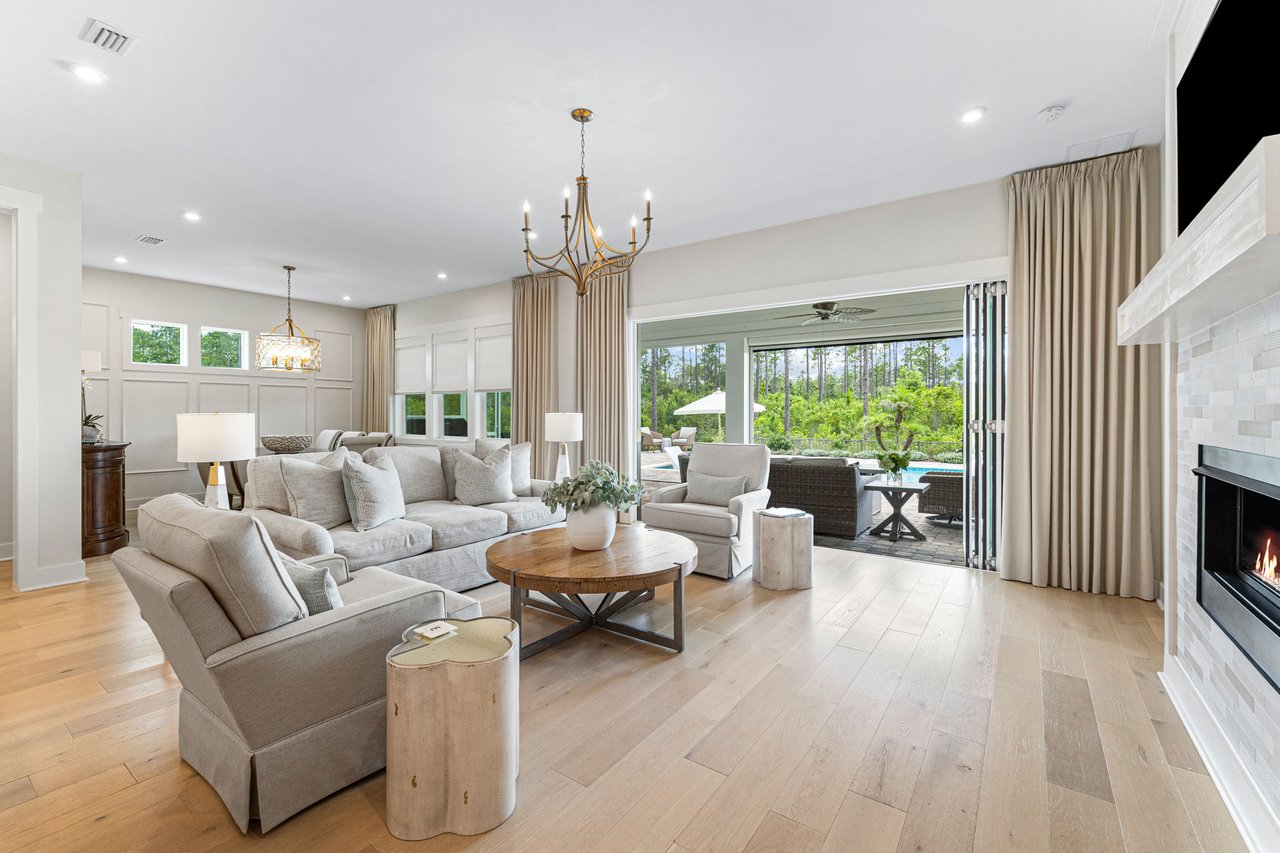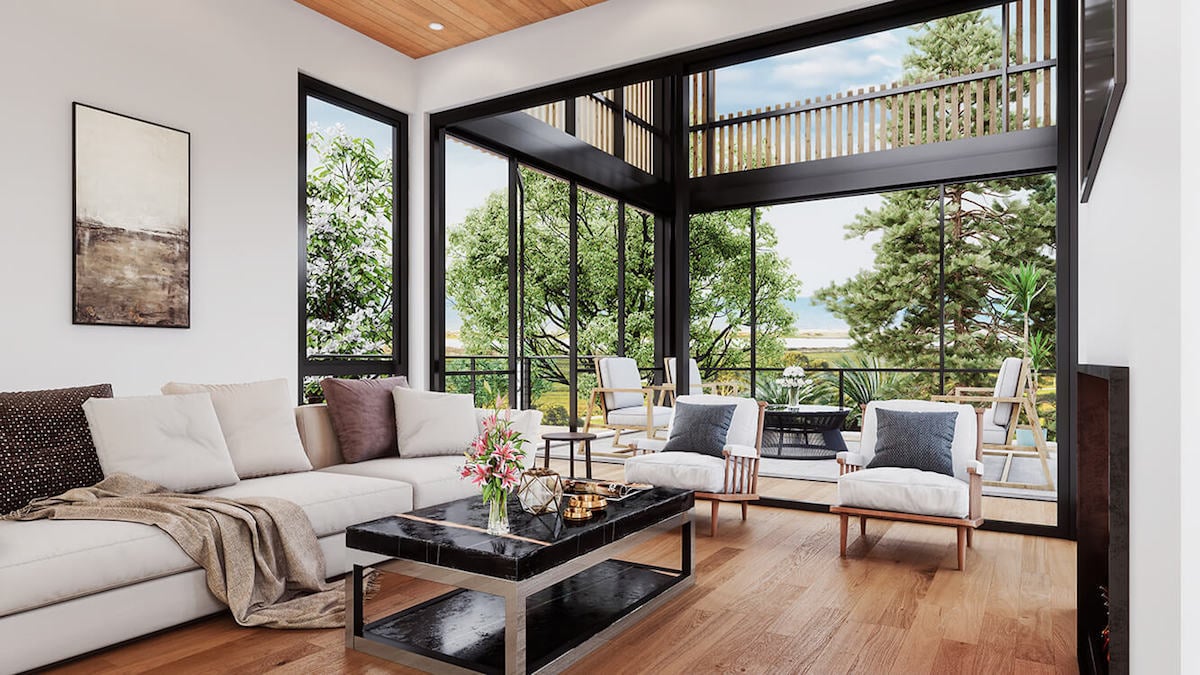Coastal Home Design Trends
As we look toward the future, coastal living home design is evolving to reflect shifting environmental concerns, technological advancements, and a desire for greater connectivity with nature. Coastal homes will emphasize sustainable practices, functional beauty, and a deeper integration with their surroundings. Below are the key trends that will shape coastal home design in the coming years:
-
Sustainable and Eco-Friendly Materials
Sustainability will be more than just a buzzword—it will be a core principle of coastal home design. With increasing awareness of climate change, coastal communities are prioritizing materials that minimize environmental impact. Expect to see homes built with reclaimed wood, natural stone, and eco-conscious composite materials that are both durable and renewable.
Recycled ocean plastics could become common for furniture, decking, and siding. Energy-efficient construction methods, such as passive house designs, will be standard in new buildings, maximizing energy conservation and minimizing waste. Solar panels, wind turbines, and rainwater collection systems will be integrated seamlessly into designs, helping homeowners reduce their carbon footprint while living harmoniously with their natural surroundings.
The line between indoor and outdoor living will continue to blur, a hallmark of coastal design that is expected to grow even more prominent. Sliding glass doors, retractable walls, and open floor plans will encourage easy movement between interior spaces and outdoor terraces, patios, and gardens. These features will create a seamless transition to nature, offering both practicality and a sense of freedom.
Designers will focus on creating spaces that function year-round, with weather-resistant furnishings and sheltered outdoor areas equipped with fire pits, grills, and cozy lounge spots. Pools and hot tubs may also become more sophisticated with sustainable heating options like solar or geothermal systems.
Biophilic design, which emphasizes a connection to nature, will be an essential feature of coastal homes. This trend goes beyond simply incorporating plants; it involves creating environments that nurture physical and mental well-being by drawing inspiration from natural forms and processes.
Expect to see large windows that frame expansive ocean views or nearby landscapes, maximized natural light, and architectural elements that mimic organic shapes and textures. Materials like bamboo, cork, and stone will dominate interiors and exteriors, and interiors will incorporate living walls, green roofs, and integrated garden spaces.
Additionally, coastal homes will increasingly feature open, airy layouts that allow residents to connect to their surroundings. Designers will prioritize natural ventilation and cooling strategies to reduce the need for artificial air conditioning systems, further emphasizing commitment to sustainability.
Smart home technologies will be deeply integrated into the fabric of coastal homes. From intelligent climate control systems that adjust based on weather conditions to voice-activated appliances, homeowners will monitor and manage their home’s energy use with ease.
Water conservation technologies will become increasingly important, especially for coastal areas where water scarcity may be a concern. Automated irrigation systems, smart faucets, and greywater recycling systems will help homeowners reduce their water consumption. Smart home security systems, integrated with weather sensors to detect potential storms, will add extra safety for coastal properties prone to natural disasters like hurricanes or flooding.
-
Natural and Earthy Color Palettes
The calming blues of the ocean, the greens of coastal plants, and the warm golden tones of the sun will be layered in muted shades, creating serene, peaceful environments. These earthy colors will be paired with natural textures like rough-hewn wood, woven wicker, linen, and stone, further enhancing the coastal aesthetic.
Coastal homes will embrace calming, earth-toned color schemes that reflect the natural beauty of the surrounding environment. Soft sand hues, warm terracotta, and rich browns will dominate both interiors and exteriors, providing a soothing, grounded feel that connects the home to its beachside or seaside location.
-
Artisanal and Local Craftsmanship
Coastal home design will embrace a more personalized, artisanal approach to decoration and furnishings. Rather than mass-produced furniture and decor, homeowners will seek out handcrafted items that reflect local culture and craftsmanship.
Locally sourced artwork, handwoven textiles, and custom-made furniture will become more common, with each piece telling a story about the region’s history and traditions. Designers will focus on creating unique, one-of-a-kind spaces, integrating pieces from local artisans and small-batch manufacturers, and creating interiors that feel personal and authentic.
-
Small-Scale, Multi-Generational Living
As more people seek to live in coastal locations, multi-generational living will become a key consideration in home design. Homes will be built with flexibility to accommodate extended families, with separate living spaces for grandparents, adult children, or guests.
Designs will incorporate private guest suites, in-law units, or even smaller, self-contained "granny flats" that allow family members to live independently but remain close. These homes will also be optimized for ease of use by all generations, with accessible features like wide doorways, ramps, and universal design principles that ensure everyone can enjoy the coastal lifestyle.
-
Minimalist and Clean Lines
A minimalist approach will continue to thrive in coastal design, emphasizing clean lines, simple forms, and unembellished beauty. This approach complements the natural surroundings, allowing the scenery to take center stage.
The focus will be on functional, uncluttered spaces that are easy to maintain and visually relaxing. Open shelving, built-in storage solutions, and multi-functional furniture will be common, providing aesthetic appeal and practicality.
Conclusion
The coastal living home design trends will be deeply rooted in sustainability, respect for nature, and the integration of cutting-edge technology. Whether it's through the use of eco-friendly materials, the incorporation of smart technologies, or the embrace of biophilic design, the coastal homes of tomorrow will offer an inviting, harmonious blend of beauty, functionality, and resilience. These homes will not only provide a sanctuary from the outside world but will also help homeowners build a more sustainable and connected future.



